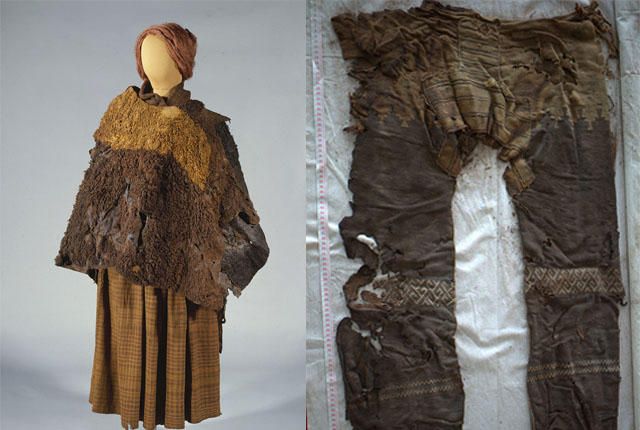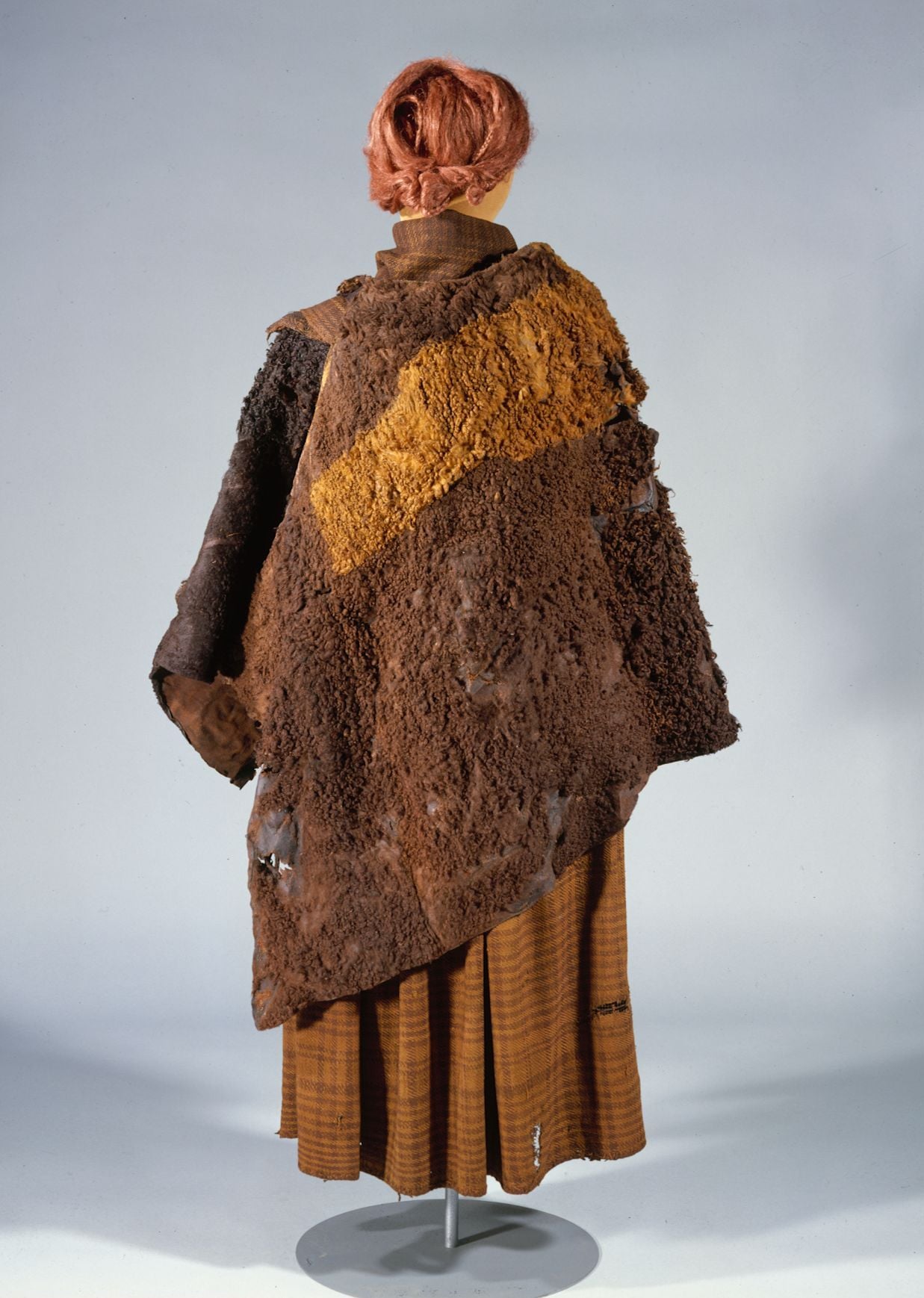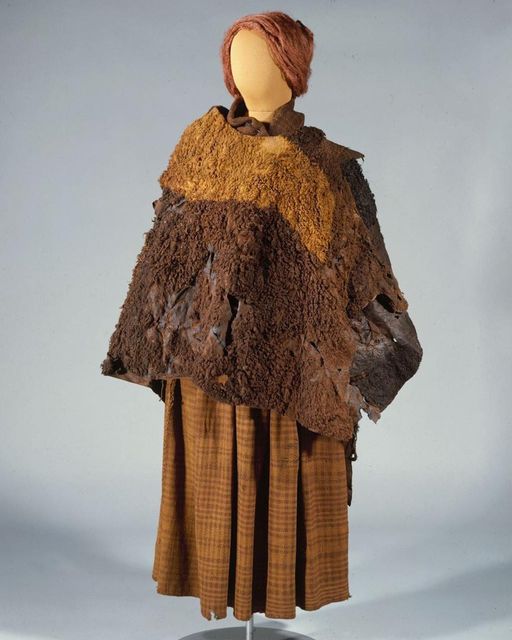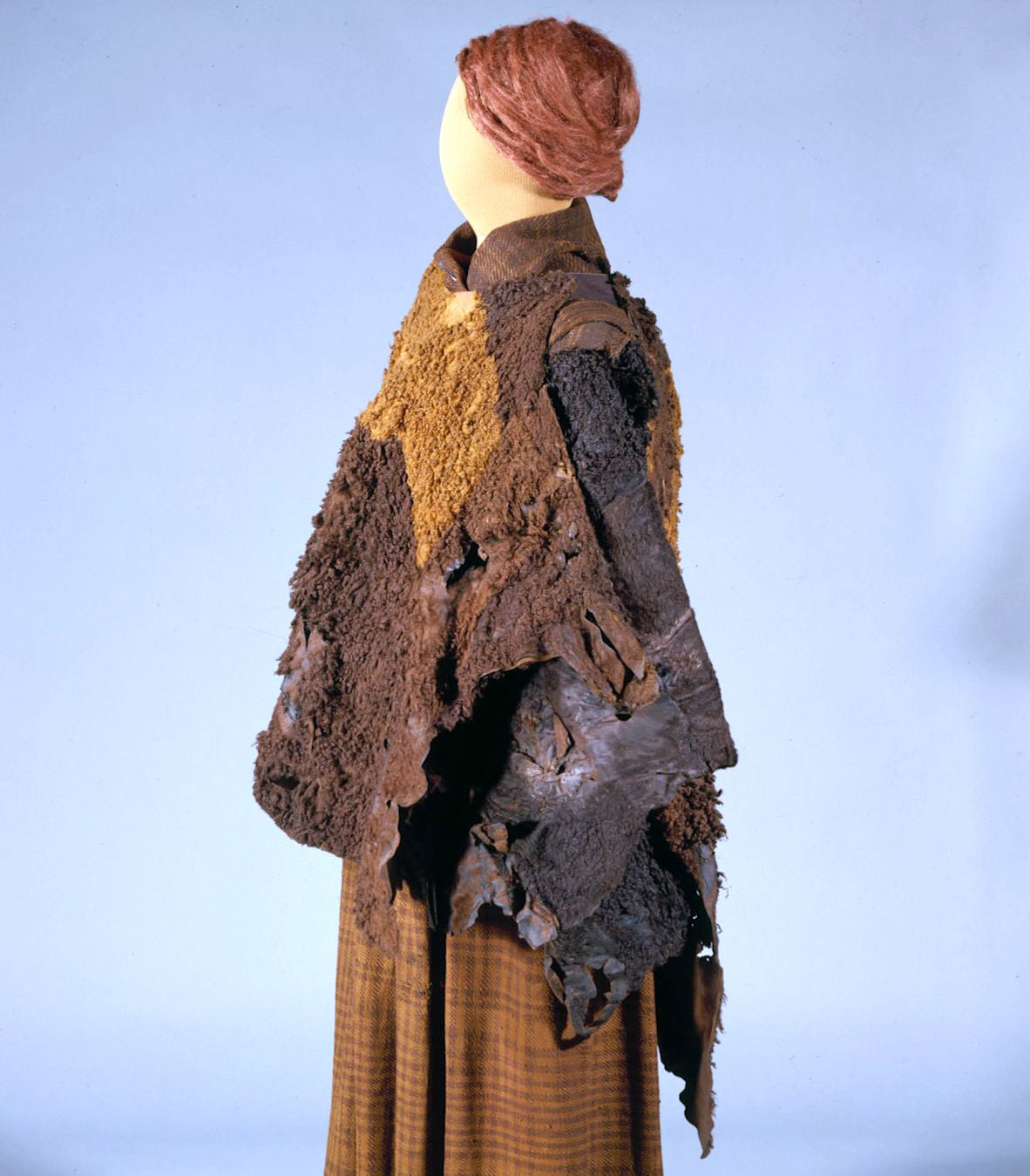
The 2000-year-old clothes of the Huldremose Woman offer a remarkable glimpse into the fashion and textiles of ancient Denmark. Recovered from a peat bog near Ramten in 1879, this well-preserved ensemble consists of a checked woollen skirt, a matching woollen scarf, and two skin capes. Now housed at the National Museum of Denmark, these ancient garments provide valuable insights into the material culture and daily life of the people who inhabited the region over two millennia ago. In this exploration, we delve into the significance and craftsmanship of the Huldremose Woman’s attire, shedding light on the ancient techniques and traditions preserved within these ancient textiles.
Unveiling the Details of the Huldremose Woman’s Clothing

The checked woollen skirt and scarf worn by the Huldremose Woman are testament to the skill and artistry of ancient Danish weavers. Woven from wool, these garments showcase intricate patterns and designs, reflecting the aesthetic preferences and cultural traditions of the time. The use of wool, a common material in ancient textile production, highlights the importance of sheep husbandry and textile manufacturing in ancient Danish society. The high-quality craftsmanship and attention to detail evident in these garments indicate a sophisticated understanding of weaving techniques and textile production methods among ancient Danish artisans.
Exploring the Function and Significance of the Skin Capes

In addition to the woollen garments, the Huldremose Woman was also adorned with two skin capes, adding layers of warmth and protection to her attire. Made from animal skins, these capes served both functional and symbolic purposes, offering insulation against the harsh Nordic climate while also symbolizing social status and identity. The presence of skin capes in the Huldremose Woman’s ensemble suggests a connection to traditional hunting and trapping practices, highlighting the importance of animal resources in ancient Danish culture. The skins used to create these capes may have been sourced from local wildlife, further emphasizing the close relationship between humans and their environment in ancient times.
Conclusion: Reflecting on the Legacy of the Huldremose Woman’s Attire

The clothing of the Huldremose Woman provides a fascinating window into the lives of ancient Danish people, offering insights into their fashion choices, material culture, and social structures. As one of the best-preserved examples of ancient textiles, these garments serve as tangible reminders of the human experience in antiquity, bridging the gap between past and present. Through careful study and preservation, archaeologists and historians are able to unravel the mysteries of the past, enriching our understanding of ancient civilizations and preserving their legacy for future generations. The Huldremose Woman’s attire continues to inspire awe and curiosity, inviting us to explore the complexities of ancient Danish society and the enduring beauty of its material culture.
Archaeological Insights: Unearthing the Past
The discovery and study of the Huldremose Woman’s clothing provide invaluable insights into ancient Danish society and the daily lives of its inhabitants. Archaeologists continue to uncover new evidence and discoveries that shed light on the customs, beliefs, and practices of past cultures. Through meticulous excavation and analysis, researchers are able to piece together the puzzle of history, uncovering hidden stories and untold truths buried beneath the earth. As we delve deeper into the past, archaeology remains a vital tool for understanding the human experience and preserving our shared heritage for generations to come.


